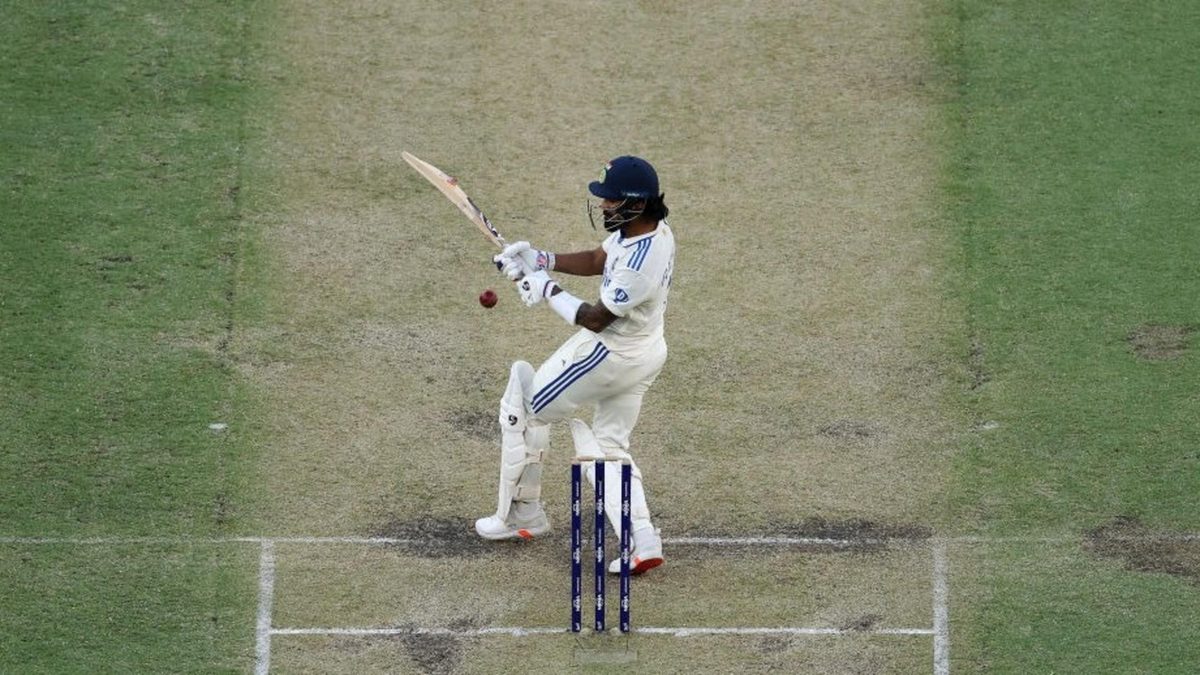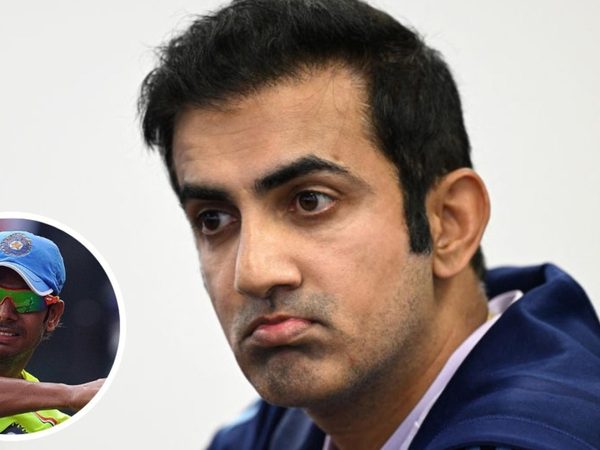
The first ball of the 25th over of India’s second innings in Perth was a bouncer that KL Rahul safely left alone. In this part of the world, you expect a lot of those. But not from Marnus Labuschagne.
Australia had resorted to using their No.3, who used to bowl leg spin and averages 58 with the ball in Tests, to bowl bumpers at 130 clicks, signaling a moral victory for India. The visitors had successfully managed to thwart a world-class bowling attack for a session without losing a wicket on a surface where the previous four had brought 20.
The second ball of the 57th over was a repeat of the first ball of the 25th. Another harmless mid-130s Labuschagne bouncer. Another calm Rahul leave. Another wicketless session ticked. India had moved along to 172-0 by the end of the second day after the first two innings had seen totals of 150 and 104. The moral victory had converted into a major statement, almost as big and impactful as the one that was made against them in the third innings of the first Test the last time they were here.
At the forefront of India’s charge was a pair of openers at very different stages in their careers. At one end was Yashasvi Jaiswal: young, exuberant, and on his first tour of Australia, with a point to prove after a duck in the first innings and four low scores in South Africa. At the other, was Rahul: in his tenth year in international cricket and fourth Test tour of Australia, having been through more ups and downs than a rollercoaster.
Rahul’s initiation to international cricket had come on these very shores, when he had replaced the current (not for this Test) India captain Rohit Sharma at the Boxing Day Test in Melbourne in 2014. His first three innings had come at three different positions, out of which he got out to two ugly, ‘brain fade’ shots for single-digit scores, and made one classy hundred opening the batting.
Nobody would have known back then that it was a sign of things to come and would summarize Rahul’s career in a nutshell a decade down the line: lengthy periods of frustration interspersed with moments of brilliance with no long-term role clarity.
The ongoing Australia tour has been no different.
An appreciation tweet for KL Rahul 👏 pic.twitter.com/2MhLg6yAPm
— Wisden India (@WisdenIndia) November 23, 2024
Rahul was asked to fly early to Australia to play a four-day game after having been dropped from the Test XI following a drubbing at the hands of New Zealand in Bengaluru. At that point, he was a specialist No.6 with public backing from the captain and coach to bat in the middle order. In fact, Virat Kohli had sacrificed his No.4 slot to accommodate Rahul at six.
By the time he reached Australia, India had lost 0-3 to New Zealand, Rohit was set to miss the ongoing Test, and Abhimanyu Easwaran, the backup opener picked in the squad, had already failed twice in the first four-day game against Australia A. India needed an opener.
Now, Rahuls have been known to be the problem-solvers for the Indian team. The ones they turn to when they need someone to perform a difficult role which not many are equipped to. In the previous generation, it was Dravid. In this, it has been KL.
As expected, all eyes turned towards Rahul in search for the answer to the Rohit replacement question. But, Rahul’s own form complicated things.
If Easwaran was sidelined due to his failure in the A games, Rahul didn’t do much different, registering scores of 4 and 10. On top of that, one of his dismissals was so bizarre that it left people questioning if he was in the right mindspace at all, a question that has been asked of him for quite a while now. Add to that a minor injury sustained in training a week off from the start of the Test, and the idea of Rahul opening the batting on a green Perth wicket against the Aussie quicks inspired even lesser confidence than Easwaran doing so. Jokes of India starting their innings at 0-1 and expert opinions of India potentially opening with Dhruv Jurelstarted doing the rounds.
Also read: Most Test sixes in a calendar year, full list: Yashasvi Jaiswal breaks McCullum's world record
Rahul, after all, has been a soft target for almost everyone over the years. He has often been the first to be trolled by the public even when he has performed, let alone when he has failed; the first to be criticised by the media; and the first to be moved around/dropped to fill holes/accommodate others in the team.
It’s not to say that Rahul has been free from all blame. He has failed more than he has succeeded. His raw numbers still only reflect a Test average of 33.87 after 53 Tests, and he has often been guilty of being too timid in his approach, particularly in the shorter formats. But one of the major reasons behind that has been the lack of role clarity and consistent, meaningful backing that goes beyond just words.
Opening overseas, batting in the middle order at home, keeping wickets in a World Cup, leading the national team - Rahul has done it all, across formats, at short notice.
It’s hard enough to excel at one role, let alone master multiple at elite level cricket. Rahul might not have consistently mastered multiple roles, but he has had varying degrees of success across most: seven of his eight Test hundreds have come away from home, one has come as a designated wicketkeeper; in ODIs, he has scored hundreds at the top, No.4, and No.5; in T20Is, he has the second most runs by an Indian opener and has hundreds from No.3 and 4; and he has led India in 17 games across formats. And now, opening again in Tests for the first time in nearly two years, Rahul has shown why he has been the chosen one to solve problems for India over the years.
On a spicy first day pitch that seamed 0.8 degrees on average and saw 17 wickets fall, Rahul played 74 balls (bettered only by Rishabh Pant’s 78) for 26 precious runs. He could have had more if not for a contentious DRS call. Then, as the pitch settled by the second afternoon, Rahul cashed in, in his own calm and composed manner: playing close to the body and with soft hands, resisting the urge to take the bait on balls wide outside off, rotating strike by placing balls into gaps in the imaginary inner circle, and attacking decisively and precisely to end the day unbeaten on 62.
Jaiswal, at the other end, has raced off to 90 and might complete his first Test hundred in Australia early in the third morning. Rahul might eventually get there too, or he might not. Irrespective of whether he does or does not, it’s almost guaranteed that he won’t be opening in the second Test, as Rohit is confirmed to return. If Shubman Gill returns as well, Rahul might well be shifted down to No.6 come Adelaide.
But by now, we know that’s how it works with him. It wouldn’t be a surprise even if he fails in the next game and the knives and trolls are out, and he is dropped. But till then, watch and acknowledge a gifted individual go about his work and put up his gift on display, soak in his brilliance, and give him his flowers. Or don’t. He’ll be there doing whatever India needs him to, regardless. He is one of the very few who can.








